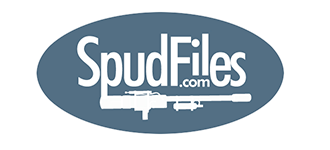But having a bit of a background in building pneumatic spud guns I decided to build mine a bit differently. The basic concept is to have a bunch of beers in a fridge on a wooden stand, with a pneumatic launcher positioned underneath. Pneumatically operated pistons load each beer in turn through an insulated trap door into the launcher, and then the beer is launched from what is really just a low-powered pneumatic gun. The pneumatic circuits to load and fire the beer are controlled by three solenoid sprinkler valves (SSVs), which are in turn controlled by a homemade switch box at the end of some wires to allow remote control of the fridge.
Here are some photos of the fridge after being completed at my garage at home. The control box wires are not full length so the box is just next to the fridge for testing purposes.
Overview Photos:



A fully-loaded magazine. Notice the extra insulation on the inside of the fridge to offset the losses from the trapdoor seal and the holes for the feed pistons.

A view of the trapdoor open with a beer on the guide rails about to feed into the barrel. The barrel is muzzleloading SDR PVC pipe.

The control box. Each switch consists of two wires with the ends wound around the jaws of a clothespin. Pressing the button forces the clothespin shut, contacting the wires and closing the circuit.

Now for some videos. These are taken after I disassembled the fridge and took it to college, then reassembled it in my townhouse for my friends and I to enjoy.
A general overview/video tour of the fridge:
A demonstration of the loading mechanism:
And finally, the one you’ve been waiting for, the beer launching:
Here is a quick sketch of the pneumatic circuitry involved. The one-way needle valves allow restricted flow in the direction of the arrow and free flow in the opposite direction. The arrows on the solenoid valves indicate flow direction:

Door Circuit operation: When the valve is opened, some air is allowed through, operating the cylinder and opening the loading door. The valve closes when pressure is equal on both sides. The air on the downstream side then leaks out through the needle valve in a couple seconds, allowing the return springs to close the door back up.
Feed Cylinders operation: When the main chamber is pressurized upon opening the arm valve, the pressure is transmitted through the hoses to the upper and lower feed cylinders. The orientation of the one-way needle valves ensures that the upper cylinder fills first, pinning the “second in line” can against the magazine wall. The lower cylinder actuates soon after, loading the “first in line” beer onto the top of the door. When the launcher is fired, venting the chamber, the cylinders lose pressure and retract. The lower one retracts first, then the upper one releases the “second in line” beer. This system prevents the weight of all the beer cans in the magazine from falling onto the lower feed piston and preventing it from retracting.
The system is entirely controlled by operating the three SSVs sequentially, by means of the control box. The electrical circuits are diagrammed below









